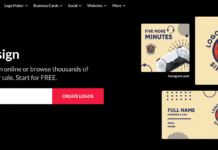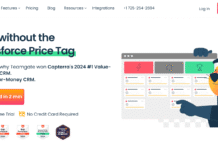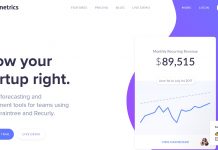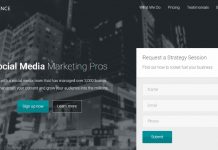SOC 2 Compliance: Criteria, Benefits, and Why It Matters for Modern Enterprises
In today’s hyper-connected world, data has become the most valuable resource for businesses of all sizes. Whether an organization is a startup working out of a small office or a global enterprise serving millions of customers, data fuels daily operations, customer engagement, and long-term strategy. Customer records, financial information, trade secrets, and intellectual property are all stored in digital systems. If these systems are not properly secured, the consequences can be devastating.
Over the past decade, reports of data breaches have become increasingly common. Hackers and cybercriminals use sophisticated methods to infiltrate weak defenses and gain access to sensitive information. The results are costly—organizations face not only immediate financial losses but also reputational damage, regulatory penalties, and loss of customer trust. In fact, many businesses never fully recover after a major breach, particularly smaller companies that lack the resources to bounce back.
To minimize such risks, organizations must adopt structured, recognized frameworks that ensure their systems and practices meet the highest standards of security. One of the most respected and widely adopted frameworks today is SOC 2 Compliance. Developed by the American Institute of Certified Public Accountants (AICPA), SOC 2 is designed specifically to ensure that companies managing customer data, particularly in cloud-based environments, are doing so responsibly and securely.
SOC 2 Compliance involves a rigorous auditing process conducted by an independent, certified auditor. The audit evaluates whether an organization’s systems, policies, and procedures align with the five Trust Services Criteria: security, availability, processing integrity, confidentiality, and privacy. Passing the audit and earning SOC 2 certification signals to customers, investors, and regulators that the company takes data protection seriously.
But SOC 2 Compliance is not just about meeting technical requirements. It also has significant business implications. Companies that achieve certification gain a competitive advantage in the marketplace, build stronger relationships with clients, and often uncover ways to operate more efficiently. For software-as-a-service (SaaS) providers, cloud service vendors, and other digital-first enterprises, SOC 2 Compliance has become a standard expectation.
In this article, we will explore SOC 2 Compliance in depth. We will examine its origins, the criteria auditors use to assess organizations, and the wide range of benefits it provides. We will also look at its impact on startups, established enterprises, and the broader business ecosystem. By the end, it will be clear that SOC 2 Compliance is more than just a certification it is a framework for building trust, resilience, and long-term success in the digital economy.
Understanding SOC 2 Compliance
To appreciate the significance of SOC 2 Compliance, it helps to understand its context. SOC stands for “Service Organization Control,” and SOC 2 is one of several auditing frameworks created by the AICPA. While SOC 1 focuses on financial reporting, SOC 2 is centered on information security. Specifically, it evaluates how organizations handle data, particularly customer data, and whether their systems meet stringent standards of protection and reliability.
SOC 2 Compliance is particularly relevant for businesses that provide technology-driven services. Cloud computing, SaaS platforms, data analytics providers, and other digital enterprises often process large volumes of sensitive customer information. These businesses are expected to not only deliver innovative products but also protect client data from unauthorized access or misuse. SOC 2 Compliance provides a standardized way to demonstrate that commitment.
When an organization seeks SOC 2 certification, it undergoes a thorough audit conducted by an independent third party. The auditor examines policies, procedures, and technical controls to determine whether the company is meeting the Trust Services Criteria. This process is not one-size-fits-all. Instead, the audit is tailored to the specific operations of the business. For example, a healthcare SaaS provider may focus heavily on privacy and confidentiality, while a payment processor might emphasize processing integrity and availability.
SOC 2 audits can result in either a Type I or Type II report. A Type I report evaluates whether an organization’s systems are suitably designed to meet the criteria at a specific point in time. A Type II report, on the other hand, assesses whether those systems operate effectively over a defined period, typically several months. While both types are valuable, Type II reports are generally more respected because they demonstrate ongoing compliance rather than a snapshot in time.
By pursuing SOC 2 Compliance, companies signal to customers and partners that they take security seriously and that their operations have been verified by an independent authority. This is especially important in industries where trust is essential.
SOC 2 Trust Services Criteria
The backbone of SOC 2 Compliance lies in the five Trust Services Criteria established by the AICPA. These criteria serve as benchmarks that auditors use to evaluate whether a company is handling customer data responsibly.
1. Security
Security is the cornerstone of SOC 2 Compliance. It ensures that systems are protected against unauthorized access, data breaches, and misuse. To meet this criterion, organizations must implement robust security measures such as firewalls, encryption, multi-factor authentication, and intrusion detection systems. Security also involves physical controls, such as restricted access to data centers and secure facilities.
2. Availability
The availability criterion assesses whether systems are reliable and accessible when customers need them. This includes implementing data backups, redundancy measures, and disaster recovery plans. In industries like finance or healthcare, system downtime can have severe consequences. SOC 2 Compliance requires companies to demonstrate that they can maintain consistent service availability.
3. Processing Integrity
Processing integrity focuses on the accuracy and reliability of system processes. For companies that handle transactions or sensitive workflows, it is essential that their systems produce correct results and operate as intended. Auditors examine whether organizations follow software development best practices, conduct thorough testing, and monitor systems for irregularities.
4. Confidentiality
Confidentiality ensures that sensitive information—such as trade secrets, business plans, or customer contracts—is protected from unauthorized access. SOC 2 Compliance requires companies to restrict data access to authorized personnel, use encryption for data storage and transmission, and establish policies for secure information sharing.
5. Privacy
Privacy relates to how organizations collect, use, retain, and dispose of personal information. Companies must demonstrate that they follow their stated privacy policies and align with Generally Accepted Privacy Principles (GAPP). Privacy is especially important for businesses handling personally identifiable information (PII) or customer health data.
Together, these five Trust Services Criteria form the foundation of SOC 2 Compliance. They provide a holistic framework for protecting customer data and ensuring organizations act responsibly in managing digital systems.
The Importance of SOC 2 Compliance in Today’s Digital Landscape
The modern business world is increasingly shaped by technology. Organizations depend on digital systems to interact with customers, manage operations, and generate revenue. Cloud computing, software-as-a-service (SaaS), artificial intelligence, and big data analytics are now standard tools for innovation. While these technologies create opportunities, they also expose businesses to unprecedented risks.
In this environment, SOC 2 Compliance has emerged as a vital safeguard. It is not simply a checkbox requirement or a certificate to display; rather, it is a comprehensive framework that aligns security practices with business objectives. Companies that embrace SOC 2 Compliance demonstrate to the market that they prioritize trust, reliability, and responsibility.
Rising Cybersecurity Threats
Cyberattacks are becoming more sophisticated and frequent. According to recent industry reports, the number of breaches targeting businesses has grown year after year, with criminals focusing heavily on organizations that manage sensitive customer data. Phishing campaigns, ransomware, insider threats, and advanced persistent threats are just some of the tactics used to compromise systems.
The consequences of such attacks extend far beyond immediate disruption. Companies can face lawsuits, regulatory fines, and the loss of key contracts. Customers are unlikely to remain loyal to businesses that have experienced breaches, especially if their personal information has been exposed. SOC 2 Compliance provides a structured approach to minimizing these risks by ensuring companies adopt and maintain robust security controls.
Building Trust with Stakeholders
In industries where trust is essential—such as finance, healthcare, and technology—stakeholders want proof that an organization is serious about protecting data. Customers ask whether their information will be safe. Investors and partners inquire about the company’s resilience against cyber threats. Regulators demand evidence of compliance with legal and industry standards.
By undergoing a SOC 2 audit and earning certification, organizations gain a powerful tool for building trust. The certification acts as an independent verification that the company has implemented strong controls and can be relied upon to manage data responsibly. This makes SOC 2 Compliance not just a technical achievement but also a key business differentiator.
Enhancing Operational Efficiency
One often-overlooked benefit of SOC 2 Compliance is its impact on internal efficiency. Preparing for an audit requires organizations to carefully examine their systems, identify weaknesses, and implement improvements. During this process, businesses often uncover inefficiencies in workflows, gaps in communication, or outdated technologies.
By addressing these issues, companies not only meet compliance standards but also streamline operations. As a result, they become more resilient and agile, better equipped to respond to customer needs and market demands. Thus, SOC 2 Compliance supports both security and business growth.
SOC 2 Compliance vs. Other Security Standards
To understand the unique role of SOC 2 Compliance, it is useful to compare it with other well-known security frameworks.
SOC 1 vs. SOC 2
SOC 1 focuses primarily on internal controls related to financial reporting. It is relevant for organizations whose services could impact their clients’ financial statements, such as payroll processors or accounting firms. SOC 2 Compliance, by contrast, is designed for organizations that handle sensitive customer data, especially in digital environments. While SOC 1 addresses financial integrity, SOC 2 addresses operational integrity and data security.
SOC 2 vs. ISO 27001
ISO 27001 is an international standard for information security management systems. Like SOC 2, it provides a framework for securing data. However, ISO 27001 is more prescriptive, requiring organizations to implement specific controls. SOC 2, on the other hand, is more flexible, allowing businesses to design controls that align with their unique operations. Companies that operate globally may pursue both certifications, but for U.S.-based SaaS and cloud providers, SOC 2 Compliance is often the standard choice.
SOC 2 vs. HIPAA
HIPAA is a U.S. regulation governing the privacy and security of healthcare data. It applies only to entities handling protected health information (PHI). SOC 2 Compliance is broader, applying to any organization that manages sensitive customer data, regardless of industry. While HIPAA compliance may be mandatory for healthcare providers, many of them also pursue SOC 2 certification to demonstrate a wider commitment to security.
SOC 2 vs. PCI DSS
PCI DSS (Payment Card Industry Data Security Standard) applies to companies that process credit card transactions. It focuses specifically on protecting cardholder data. SOC 2 Compliance has a wider scope, addressing multiple aspects of data management beyond payment processing. Businesses in the financial sector often need to comply with both PCI DSS and SOC 2 to reassure stakeholders.
These comparisons highlight the unique role of SOC 2 Compliance. It is not limited to a specific industry or type of data but serves as a versatile framework for building trust in digital operations.
Preparing for SOC 2 Compliance
Achieving SOC 2 Compliance requires careful planning and a structured approach. Organizations must be willing to invest time and resources into preparing for the audit. While the process can be demanding, the long-term benefits make it worthwhile.
Step 1: Understand the Requirements
The first step is to thoroughly understand the five Trust Services Criteria: security, availability, processing integrity, confidentiality, and privacy. Companies must evaluate how these criteria apply to their operations and what controls are necessary to meet them.
Step 2: Conduct a Readiness Assessment
Before undergoing a formal audit, many organizations perform a readiness assessment. This internal review helps identify gaps in existing policies, procedures, and technologies. It provides a roadmap for what needs to be improved before the official audit begins.
Step 3: Implement Security Controls
Based on the assessment, organizations must implement the necessary controls. This might include updating firewalls, improving encryption practices, training employees on security awareness, or establishing formal privacy policies. Controls should be practical, effective, and aligned with business needs.
Step 4: Engage an Independent Auditor
SOC 2 audits must be conducted by independent, certified public accountants (CPAs) who specialize in information security. Choosing the right auditor is critical. A good auditor not only evaluates compliance but also provides insights into best practices and areas for improvement.
Step 5: Continuous Monitoring
SOC 2 Compliance is not a one-time event. Maintaining certification requires ongoing commitment. Organizations must continuously monitor their systems, update their controls, and be prepared for regular audits. This ensures long-term protection and demonstrates to stakeholders that compliance is part of the company’s culture.
The Benefits of SOC 2 Compliance for Businesses
While the technical details of SOC 2 Compliance focus on security and operational controls, the business benefits are just as significant. For many companies, the decision to pursue certification is not simply about avoiding risks but also about unlocking opportunities for growth, trust, and long-term success.
Protecting Brand Reputation
In a digital marketplace, reputation is everything. One breach, even if small, can erode years of goodwill and hard work. Customers today are well-informed; they read the news, they compare companies, and they pay attention to how businesses respond to cybersecurity incidents. By achieving SOC 2 Compliance, an organization demonstrates that it has taken meaningful steps to protect its brand.
For example, imagine a SaaS company providing services to financial institutions. These clients need reassurance that their customer data will remain secure. Without SOC 2 certification, the company may struggle to win contracts, as competitors with compliance have a clear advantage. On the other hand, achieving certification builds immediate credibility, signaling that the brand can be trusted.
Gaining a Competitive Edge
Not every company has invested in SOC 2 Compliance. Those that have can stand out in the marketplace. Security-savvy customers now demand transparency about how their data is handled. When evaluating potential service providers, they often prioritize companies with certifications like SOC 2. This gives compliant businesses a strong edge, particularly in industries like healthcare, finance, and technology where sensitive data is constantly processed.
Consider two startups offering similar products. One is SOC 2 certified, and the other is not. Investors and customers will almost always choose the compliant option, because it reduces risk. In this way, SOC 2 Compliance is more than just a cost of doing business—it becomes a competitive differentiator that drives growth.
Improving Risk Management
The process of preparing for SOC 2 certification forces companies to evaluate their risk management practices. Through readiness assessments and audits, organizations gain insights into weaknesses they may not have noticed before. These could be gaps in employee training, vulnerabilities in network security, or inconsistencies in privacy policies.
By addressing these gaps, companies strengthen their risk management frameworks. As a result, they are better prepared to face unexpected threats. In this sense, SOC 2 Compliance is not only about passing an audit—it is about building a culture of resilience and accountability.
Streamlining Internal Processes
Another advantage of SOC 2 preparation is the improvement of internal efficiency. Auditors often recommend standardizing workflows, documenting procedures, and adopting new technologies. These steps do more than satisfy compliance—they make day-to-day operations smoother.
For instance, a startup may discover during the audit that its data backup processes are inconsistent. By fixing this issue, the company not only passes the audit but also ensures that employees can work more confidently, knowing data is always recoverable. SOC 2 Compliance thus has a ripple effect, improving efficiency across departments.
Financial Safeguards
Cyberattacks are expensive. From ransom payments and regulatory fines to lost customers and legal fees, the financial impact of a breach can be devastating. SOC 2-certified companies are better positioned to avoid these costs, because they have strong controls in place. Even if an incident occurs, compliance helps limit damage.
For startups, this can be the difference between survival and closure. A single breach could wipe out their limited resources. For larger enterprises, the stakes are even higher, with potential losses running into millions. In both cases, SOC 2 Compliance provides a safety net, reducing the likelihood and impact of financial loss.
SOC 2 Compliance and Customer Relationships
At its core, SOC 2 is about building trust. Customers entrust companies with their most valuable information, and they expect that information to be handled responsibly. SOC 2 Compliance strengthens this relationship by offering proof that the company values data protection.
Transparency in Operations
SOC 2 reports provide customers with detailed information about a company’s controls and procedures. This transparency reassures clients that the company has nothing to hide. In many industries, customers now expect this level of openness before signing contracts.
Strengthening Long-Term Loyalty
When customers know their data is safe, they are more likely to remain loyal. This is especially true in sectors like healthcare or finance, where switching providers can be difficult. By maintaining SOC 2 Compliance, companies reduce churn and create stronger long-term relationships.
Supporting Business Partnerships
Beyond customer relationships, compliance also enhances business partnerships. Larger companies often require their vendors and service providers to demonstrate compliance with recognized standards. Without SOC 2 certification, smaller vendors may be excluded from lucrative partnerships.
For example, a cloud storage startup may be unable to work with a multinational corporation unless it proves compliance. By achieving certification, the startup opens doors to collaborations that would otherwise remain closed.
SOC 2 Compliance for Startups
Some startups assume that compliance is only for larger enterprises. However, this is a misconception. Cybercriminals often target smaller businesses precisely because they are less likely to have robust security measures. In fact, startups can benefit from SOC 2 Compliance even more than established companies.
Attracting Investors
Investors want to minimize risk. They are more likely to support startups that can demonstrate strong security practices. SOC 2 certification provides tangible evidence that the company is prepared to scale responsibly.
Winning Enterprise Clients
For startups, landing enterprise clients can be a game changer. Yet most large corporations will not work with vendors that lack compliance. By pursuing SOC 2 certification early, startups position themselves to compete for bigger contracts.
Creating a Culture of Security
Implementing compliance at an early stage helps startups build a culture of security from the ground up. Employees become accustomed to following strong policies, and systems are designed with protection in mind. This proactive approach prevents costly mistakes later.
Balancing Costs and Benefits
While the certification process requires time and money, the return on investment is significant. Startups that achieve SOC 2 Compliance gain trust faster, attract more clients, and avoid risks that could derail their growth. For these reasons, compliance should not be seen as an expense but as an investment in the company’s future.
SOC 2 Compliance and Large Enterprises
While startups benefit from SOC 2 as a way to build credibility, large enterprises approach SOC 2 Compliance with a different perspective. For them, compliance is not optional—it is essential to maintaining leadership in highly competitive industries.
Meeting Regulatory Expectations
Enterprises often operate across multiple jurisdictions, each with its own set of laws and regulations regarding data protection. SOC 2 Compliance helps unify these requirements under a single framework, making it easier to demonstrate adherence to global standards. Regulators and auditors recognize SOC 2 as a trusted benchmark, which allows large companies to prove compliance more efficiently.
Protecting Shareholder Value
For publicly traded companies, cybersecurity incidents can have immediate consequences on stock value. A single breach can cause a significant drop in market capitalization. By investing in SOC 2 Compliance, enterprises signal to shareholders that they are actively reducing risks and protecting long-term value.
Enabling Global Partnerships
Large corporations rely on extensive networks of partners, vendors, and contractors. Many of these partnerships require strict assurance of data protection. Without SOC 2 certification, enterprises may face delays in closing deals or even lose opportunities to competitors who are compliant. SOC 2 therefore acts as a passport for global collaboration.
Driving Internal Culture Change
For enterprises with thousands of employees, ensuring that everyone follows consistent policies can be challenging. The process of preparing for SOC 2 certification forces the organization to align departments, clarify responsibilities, and standardize processes. Over time, this creates a culture of accountability and security awareness across the enterprise.
The SOC 2 Compliance Audit Process
Achieving SOC 2 Compliance involves a structured audit carried out by an independent certified public accountant (CPA) firm. Understanding how this process works can help organizations prepare effectively.
Step 1: Defining the Scope
The first step in the audit process is to define its scope. Not every system or service within the company needs to be evaluated—only those that are relevant to the organization’s commitments to customers. For instance, a SaaS provider may choose to focus the audit on its cloud hosting and data processing systems.
Step 2: Documenting Controls
Organizations must document their security controls and provide evidence of their effectiveness. This may include policies on user access, encryption methods, incident response procedures, and disaster recovery plans. Documentation is critical because auditors need proof that policies are not only written but also practiced.
Step 3: Fieldwork and Testing
During the fieldwork stage, auditors test the organization’s controls to ensure they are working as intended. For a Type I audit, this involves evaluating the design of controls at a specific point in time. For a Type II audit, auditors test the controls over a longer period, often six months to a year, to verify consistent effectiveness.
Step 4: Report Preparation
Once testing is complete, auditors prepare a SOC 2 report. This report details the systems evaluated, the controls tested, and the auditor’s opinion on their effectiveness. Organizations can share this report with customers, investors, and partners to demonstrate compliance.
Step 5: Addressing Gaps
If auditors identify weaknesses, the organization must address them before certification is granted. This often involves implementing new technologies, refining policies, or providing additional employee training. Once the gaps are resolved, the company can undergo re-testing to confirm compliance.
SOC 2 Type I vs. SOC 2 Type II
There are two types of SOC 2 reports, each serving different purposes.
SOC 2 Type I
A Type I report evaluates whether a company’s systems are suitably designed to meet the Trust Services Criteria at a specific point in time. It provides a snapshot of the company’s readiness for compliance. Startups often pursue Type I as their first step, since it requires less time and demonstrates initial commitment to security.
SOC 2 Type II
A Type II report goes further by evaluating whether controls operate effectively over a longer period, typically six months or more. This report provides stronger assurance to customers and stakeholders because it proves that compliance is not just theoretical but practiced consistently. Large enterprises and established SaaS providers often pursue Type II certification to strengthen credibility.
Which Type to Choose?
The choice between Type I and Type II depends on business goals. A young startup might begin with Type I to attract investors quickly, while a mature company serving enterprise clients will almost always need Type II. Ultimately, both reports are valuable steps on the journey toward long-term SOC 2 Compliance.
Common Challenges in Achieving SOC 2 Compliance
While the benefits are clear, the journey to SOC 2 Compliance can be challenging. Organizations often face obstacles that require careful planning to overcome.
Resource Allocation
Compliance requires time, money, and expertise. Small companies may struggle to dedicate resources to the process while still focusing on growth. Outsourcing compliance support or working with managed service providers can help bridge this gap.
Employee Training
A company’s policies are only as strong as the people who follow them. Employees may resist new rules or overlook procedures, creating vulnerabilities. Regular training sessions and awareness programs are essential to ensure compliance becomes part of the culture.
Keeping Up with Change
Technology evolves rapidly, and so do cyber threats. Controls that were sufficient one year may be outdated the next. Continuous monitoring and regular updates are critical to staying compliant over time.
Balancing Flexibility and Security
Businesses must strike a balance between strong controls and user convenience. Too many restrictions can slow down workflows and frustrate employees. Successful SOC 2 programs find ways to secure systems without hindering productivity.
SOC 2 Compliance and Industry Applications
While SOC 2 Compliance applies broadly across industries, its impact is especially significant in sectors that handle large amounts of sensitive data. Each industry faces unique challenges, but the SOC 2 framework provides a flexible approach to meeting them.
Healthcare
Healthcare organizations manage enormous volumes of personal and sensitive health information. Breaches in this sector not only violate patient privacy but also lead to heavy penalties under regulations such as HIPAA. For hospitals, clinics, and health tech startups, SOC 2 Compliance demonstrates that data is being managed securely and responsibly. Cloud-based medical record systems and telemedicine platforms increasingly rely on SOC 2 certification to assure patients and partners of their trustworthiness.
Finance
Financial institutions are prime targets for cybercriminals because they hold highly valuable information such as credit card numbers, bank accounts, and investment details. SOC 2 Compliance helps financial firms, fintech startups, and payment processors implement robust security measures. By meeting the Trust Services Criteria, these organizations reassure clients, investors, and regulators that their systems can withstand sophisticated attacks.
Technology and SaaS
Technology companies and SaaS providers are perhaps the most frequent adopters of SOC 2 certification. These businesses often serve clients in multiple industries, from retail to education, which means they must meet diverse security expectations. A SaaS platform that earns SOC 2 Compliance can appeal to enterprise customers that demand higher standards of protection. Without it, they risk being excluded from major contracts.
E-commerce
E-commerce platforms handle sensitive customer data, including payment details, delivery addresses, and purchase histories. Consumers want to know that their information will not be misused or exposed. By achieving SOC 2 certification, e-commerce companies prove that they are serious about protecting customer data, thus improving trust and reducing cart abandonment.
Professional Services
Consultancies, law firms, and marketing agencies often manage confidential client information. While these businesses may not process credit card data, the confidentiality of contracts, strategies, or personal records is just as critical. SOC 2 Compliance gives clients assurance that their business-sensitive information will remain secure.
SOC 2 Compliance as a Business Enabler
Achieving SOC 2 certification is more than an exercise in risk management. For many organizations, it becomes a catalyst for growth, enabling new opportunities that would not otherwise be possible.
Expanding Market Reach
Many enterprise clients now make SOC 2 certification a requirement for vendors. Without it, companies may be disqualified from bidding for contracts. Once compliant, however, businesses can access larger markets and attract clients from highly regulated industries. This can dramatically increase revenue potential.
Building Investor Confidence
Investors are always concerned with risk. A company that has not addressed data protection may be seen as a liability. By contrast, organizations with SOC 2 Compliance are viewed as safer investments, as they have demonstrated discipline, foresight, and accountability. This can be especially important for startups seeking funding.
Strengthening Mergers and Acquisitions
During mergers and acquisitions, due diligence often includes examining a company’s security posture. Businesses with SOC 2 certification have an advantage, as they can provide proof of robust controls. This makes them more attractive acquisition targets and can increase their valuation.
Supporting International Growth
As businesses expand globally, they must navigate different regulations across jurisdictions. While SOC 2 is not a legal requirement in every country, it is widely recognized as a mark of credibility. Multinational corporations often favor vendors that have SOC 2 certification, making it easier for compliant companies to grow internationally.
The Cost of Non-Compliance
Failing to achieve or maintain SOC 2 Compliance comes with serious risks.
Loss of Customers
Today’s customers are increasingly aware of security issues. If they discover that a company is not compliant with recognized standards, they may choose competitors instead. Losing customers due to poor security practices can be far more expensive than the cost of compliance.
Reputational Damage
Once a company suffers a data breach, the news spreads quickly. Rebuilding trust can take years, and some businesses never fully recover. By skipping SOC 2 certification, organizations gamble with their reputation.
Legal and Regulatory Penalties
While SOC 2 itself is not a legal mandate, many industries have strict data protection laws. A lack of compliance often results in legal liabilities when breaches occur. Courts and regulators may view non-compliant companies as negligent.
Missed Business Opportunities
Without SOC 2 certification, companies may be excluded from contracts with enterprise clients, government agencies, or regulated industries. These lost opportunities can stifle growth and prevent expansion into profitable markets.
Case Studies: SOC 2 Compliance in Action
Real-world examples illustrate the impact of SOC 2 Compliance on organizations.
SaaS Startup Scaling Rapidly
A SaaS startup providing project management tools wanted to secure enterprise clients. However, potential customers consistently asked whether the company was SOC 2 certified. Recognizing this as a barrier to growth, the startup invested in compliance. Within six months of achieving certification, it was able to close contracts with two Fortune 500 clients, tripling its revenue.
Healthcare Platform Protecting Patients
A healthcare technology company offering cloud-based patient record systems faced scrutiny from hospitals concerned about data privacy. By pursuing SOC 2 Compliance alongside HIPAA requirements, the company gained trust from medical institutions. As a result, adoption of its platform accelerated, and the business expanded into new regions.
Financial Services Firm Winning Investor Trust
An investment advisory firm struggled to attract institutional investors due to concerns about its cybersecurity posture. After undergoing a SOC 2 Type II audit, it gained certification and was able to demonstrate resilience against data threats. This directly contributed to securing new funding rounds, supporting long-term growth.
These case studies show that SOC 2 is not only about avoiding risk but also about unlocking opportunities and creating measurable business impact.
SOC 2 Compliance and the Human Factor
Technology and policies form the backbone of SOC 2 Compliance, but people ultimately determine whether controls succeed or fail. Human error, negligence, or lack of awareness are among the most common causes of security breaches. For this reason, organizations pursuing compliance must pay close attention to the human side of security.
Employee Training and Awareness
One of the most effective ways to reduce risk is through regular employee training. Staff members need to understand why SOC 2 matters, how their actions impact compliance, and what responsibilities they carry. Training sessions should cover topics such as phishing awareness, password management, secure data handling, and incident reporting.
SOC 2 audits often evaluate whether companies have adequate training programs in place. An organization might have state-of-the-art firewalls and encryption, but if employees are not trained to recognize suspicious emails, attackers can still gain entry. A culture of awareness ensures that security is not just a technical requirement but a shared responsibility.
Clear Policies and Accountability
Compliance also depends on well-documented policies. Employees should have clear guidelines on data access, information sharing, and acceptable use of systems. More importantly, there must be accountability. Managers and team leaders should be responsible for ensuring their teams follow policies consistently.
In many organizations, compliance becomes a top-down initiative. Leadership must set the tone by modeling secure behavior, enforcing rules, and providing resources for security initiatives. Without strong leadership support, policies are unlikely to be followed consistently.
Insider Threats and Privilege Management
Not all threats come from outside. Insider threats, whether intentional or accidental, are a significant risk. Employees with excessive access privileges can cause damage if accounts are compromised. SOC 2 requires organizations to implement strong access controls, granting permissions only to those who need them.
Privilege management tools, combined with regular audits of access rights, help reduce insider risks. For example, when an employee leaves the company, their access must be revoked immediately to prevent unauthorized use. SOC 2 Compliance ensures these procedures are part of the organization’s routine operations.
Building a Security-First Culture
Ultimately, compliance cannot succeed if security is viewed as a burden. Organizations that treat security as an afterthought often struggle to maintain compliance. Instead, businesses should aim to build a “security-first” culture, where employees see protecting data as part of their job. Celebrating compliance milestones, recognizing employee contributions, and embedding security into daily workflows all contribute to this culture.
SOC 2 Compliance and Technology
While people are central to compliance, technology provides the tools necessary to meet SOC 2 requirements.
Cloud Security
With the rise of cloud computing, many organizations now store and process customer data in cloud environments. SOC 2 auditors closely examine how companies manage cloud security, including encryption, access controls, and vendor management. Providers like AWS, Microsoft Azure, and Google Cloud often provide compliance-ready tools, but companies must configure them properly.
Encryption and Data Protection
Encryption is a cornerstone of SOC 2 Compliance. Data must be protected both at rest and in transit. This ensures that even if attackers gain access to files or communications, the information remains unreadable without the proper keys. Companies must also demonstrate strong key management practices to auditors.
Monitoring and Logging
SOC 2 requires organizations to continuously monitor systems for suspicious activity. Logging user actions, tracking failed login attempts, and recording system changes all contribute to compliance. These logs provide evidence during audits and can help detect intrusions before they cause significant damage.
Disaster Recovery and Business Continuity
Availability is one of the five Trust Services Criteria, and technology plays a key role in ensuring it. Companies must demonstrate that they have reliable data backups, redundancy, and disaster recovery systems. This means that if servers fail, natural disasters strike, or cyberattacks occur, the organization can continue operating without significant disruption.
Emerging Technologies and SOC 2
New technologies such as artificial intelligence, machine learning, and blockchain present both opportunities and challenges for compliance. While they can improve security by detecting anomalies faster or providing tamper-proof records, they also introduce new risks. Companies exploring these technologies must carefully assess how they align with SOC 2 requirements.
SOC 2 Compliance as a Continuous Journey
A common misconception is that compliance ends once certification is achieved. In reality, SOC 2 Compliance is an ongoing journey that requires continuous effort.
Regular Audits
Type II audits, in particular, require companies to demonstrate consistent compliance over time. This means that organizations must maintain strong controls not just during audit preparation but throughout the year. Auditors often revisit companies annually to verify continued adherence.
Continuous Monitoring
Threat landscapes evolve quickly. What was secure yesterday may be vulnerable today. Continuous monitoring of systems, policies, and employee behavior ensures that organizations can adapt to new risks. Automated tools can help track compliance and generate alerts when issues arise.
Updating Policies and Controls
As businesses grow, their operations change. New services, technologies, and partnerships all impact compliance. Policies and controls must be updated regularly to reflect these changes. For example, a startup expanding into international markets may need to revise its privacy policies to comply with new regulations.
Ongoing Training and Education
Employee awareness cannot be treated as a one-time effort. Regular refresher courses and updated training materials are essential to keeping staff informed about evolving threats. Organizations that view training as part of their compliance culture are more likely to succeed in maintaining certification.
The Business Case for SOC 2 Compliance
For executives evaluating whether to pursue SOC 2 certification, the question often comes down to return on investment. While the process requires time, money, and effort, the benefits are substantial.
Reducing Risk Exposure
Data breaches are costly. By achieving SOC 2 Compliance, companies reduce their exposure to financial, legal, and reputational risks. This alone can justify the investment, especially for organizations operating in high-risk industries.
Unlocking Growth Opportunities
SOC 2 certification often acts as a gateway to new markets, partnerships, and customers. Without it, companies may be excluded from enterprise contracts or limited in their ability to scale. With it, they gain access to larger clients and more profitable deals.
Demonstrating Leadership
Compliance also positions companies as leaders in their industries. It signals to competitors, regulators, and customers that the organization is proactive about security. This leadership can enhance brand reputation and attract top talent who want to work for responsible employers.
Long-Term Cost Savings
While compliance requires an upfront investment, it can save money in the long run. By preventing breaches, avoiding penalties, and improving efficiency, organizations often find that the financial benefits outweigh the costs.
SOC 2 Compliance and Third-Party Vendors
One of the growing challenges in the digital economy is managing third-party risk. Organizations often rely on external vendors, contractors, and partners to deliver services. While outsourcing can reduce costs and improve efficiency, it also introduces new security risks. If a vendor fails to protect data, the responsibility often falls back on the primary organization.
The Vendor Risk Challenge
In recent years, many high-profile breaches have occurred not because a company’s internal systems were compromised but because attackers exploited vulnerabilities in third-party providers. This highlights why vendor risk management is central to SOC 2 Compliance.
Auditors often examine how companies evaluate, select, and monitor their vendors. Do they perform due diligence before signing contracts? Do they require vendors to meet certain security standards? Are there ongoing monitoring practices in place to detect issues? These questions play a key role in compliance audits.
Requiring Vendor Compliance
Many organizations now require their vendors to achieve SOC 2 Compliance as part of contract negotiations. This ensures that every link in the supply chain adheres to the same standards. For smaller vendors, certification can be a prerequisite for doing business with larger enterprises.
For example, a cloud-based analytics startup may want to work with a Fortune 500 company. The larger client will almost certainly ask whether the startup is SOC 2 certified. Without compliance, the partnership may never move forward. By achieving certification, the vendor demonstrates its reliability and reduces risk for the enterprise.
Monitoring Vendor Performance
Compliance does not end when a contract is signed. Organizations must continue to monitor vendors throughout the relationship. This can include regular security assessments, performance reviews, and updates on how vendors address emerging threats. SOC 2 encourages businesses to implement structured vendor management programs to maintain accountability.
Shared Responsibility in the Cloud
Cloud computing presents unique challenges for compliance. When data is stored in the cloud, responsibility is shared between the cloud provider and the client. SOC 2 auditors examine how organizations manage this relationship, ensuring that both parties fulfill their roles. For instance, while a cloud provider may secure the infrastructure, the client must configure systems correctly and manage user access responsibly.
SOC 2 Compliance and Customer Expectations
Customer expectations around security have evolved dramatically. Ten years ago, clients might have assumed their data was safe without demanding proof. Today, that assumption no longer exists. Customers want evidence that companies are taking security seriously, and SOC 2 Compliance provides exactly that.
Transparency and Assurance
SOC 2 reports give customers insight into an organization’s security practices. While the full report is typically confidential, companies often provide summaries or attestations to demonstrate their compliance status. This transparency reassures clients and makes them more comfortable sharing sensitive information.
Building Loyalty Through Trust
Trust is the foundation of long-term customer relationships. When clients see that a company has invested in SOC 2 certification, they feel more confident about continuing the partnership. This loyalty reduces churn and increases customer lifetime value.
Enabling Enterprise Contracts
For enterprise clients, compliance is not optional. They often include SOC 2 certification as a requirement in vendor contracts. Without it, companies may never be considered in the procurement process. Achieving compliance therefore opens doors to lucrative enterprise-level deals that would otherwise remain out of reach.
Differentiation in Competitive Markets
In saturated markets, it can be difficult for companies to stand out based on features or pricing alone. Security has become a key differentiator. A company that can say “we are SOC 2 compliant” gains an immediate advantage over competitors who cannot make the same claim.
SOC 2 Compliance in International Context
Although SOC 2 was developed in the United States, its influence extends worldwide. Global businesses increasingly recognize SOC 2 certification as a mark of credibility.
Recognition Across Borders
While different regions have their own regulations, SOC 2 is widely accepted as evidence of strong security practices. European clients may prioritize GDPR compliance, but they often view SOC 2 as complementary. In Asia-Pacific markets, multinational corporations frequently require vendors to have SOC 2 certification to ensure consistency across global operations.
Aligning with Other Standards
SOC 2 does not exist in isolation. Many organizations align their compliance programs with multiple frameworks. For example, a company might combine SOC 2 with ISO 27001 to satisfy both U.S. and international clients. Similarly, healthcare providers often pursue both HIPAA and SOC 2 certification to cover industry-specific and broader security requirements.
Supporting Global Expansion
For companies seeking to expand internationally, SOC 2 certification provides a valuable foundation. It shows that the business already meets high security standards, making it easier to adapt to additional local regulations. This reduces friction during global expansion and accelerates market entry.
The Future of SOC 2 Compliance
As technology evolves, so too does the role of SOC 2 Compliance. The framework must adapt to address new threats, industries, and technologies.
Evolving Cyber Threats
Cybercriminals are constantly developing new tactics. Ransomware, supply chain attacks, and AI-driven threats are becoming more common. SOC 2 criteria will continue to evolve to address these challenges, requiring companies to update their controls regularly.
Integration with Emerging Technologies
Technologies like artificial intelligence, blockchain, and quantum computing will change how data is stored, processed, and secured. SOC 2 standards will likely expand to address these new paradigms, ensuring that companies using advanced tools remain accountable for data protection.
Increasing Global Adoption
As businesses operate in increasingly interconnected markets, SOC 2 is expected to become even more global in scope. International companies may adopt it as a universal benchmark for vendor trust, making certification even more valuable for organizations seeking to grow.
From Compliance to Continuous Assurance
The future of compliance may shift from periodic audits to continuous assurance. With real-time monitoring and automated reporting, organizations could demonstrate compliance on an ongoing basis rather than through annual reviews. This shift would align well with the fast-paced nature of cybersecurity threats.
SOC 2 Compliance and Innovation
One of the most important, yet sometimes overlooked, aspects of SOC 2 Compliance is how it enables innovation. At first glance, compliance may seem restrictive—setting boundaries, enforcing policies, and requiring constant monitoring. However, in practice, SOC 2 certification often gives companies the freedom to innovate more confidently.
Reducing Security Anxiety
Without structured compliance, businesses may find themselves in a constant state of uncertainty. Leaders worry about whether systems are secure, whether data is being handled properly, and whether a breach might occur at any moment. This fear can distract teams from focusing on growth and innovation.
With SOC 2 Compliance in place, many of these worries are alleviated. The company knows that strong controls are established, risks are managed, and employees are trained. This allows leaders to redirect their energy toward product development, customer service, and strategic initiatives, rather than spending all their time worrying about security gaps.
Supporting Agile Development
For technology companies, particularly SaaS providers, agility is a core advantage. They must be able to launch new features quickly and respond to customer feedback. However, without a clear compliance framework, rapid development can create vulnerabilities.
SOC 2 encourages organizations to integrate security into the development lifecycle. By embedding compliance into agile workflows, companies can move fast without sacrificing safety. This creates a balance where innovation thrives alongside protection.
Encouraging Responsible Experimentation
Innovation often involves experimentation with new tools, platforms, and methods. Without compliance, this experimentation can expose sensitive data or create compliance risks. With SOC 2 controls in place, organizations can test new ideas in a structured, secure environment.
For instance, a SaaS company might experiment with machine learning features to improve customer experience. Because its compliance framework already mandates strong access controls and monitoring, the company can conduct these experiments safely, ensuring that customer data remains protected.
Building Customer Confidence in New Products
When launching new products or services, companies need customers to trust them. A strong compliance foundation reassures clients that even if the offering is new, it is backed by mature security practices. This trust can accelerate adoption and reduce hesitation among early users. In this way, SOC 2 Compliance becomes a growth enabler, not a limitation.
SOC 2 Compliance and Financial Impact
The financial implications of SOC 2 certification are profound. Beyond protecting against losses, compliance often generates measurable returns.
Cost of a Breach vs. Cost of Compliance
Studies consistently show that the cost of a data breach far outweighs the cost of compliance. Breaches can result in regulatory fines, lost customers, lawsuits, and operational downtime. For small businesses, a major incident can be fatal.
In contrast, the cost of achieving SOC 2 Compliance is predictable and controllable. While it requires investment in audits, technology, and training, the return on investment becomes clear when compared to the potential financial devastation of a breach.
Attracting More Profitable Customers
Enterprise clients tend to pay higher fees for services but are also more demanding in their security expectations. SOC 2 certification enables companies to win these lucrative contracts. Over time, the revenue gained from enterprise deals can far exceed the initial costs of compliance.
Lowering Insurance Premiums
Cyber liability insurance providers increasingly consider compliance when determining premiums. Companies with SOC 2 Compliance can often negotiate lower rates, as they are seen as lower-risk clients. This creates ongoing financial savings.
Improving Operational Efficiency
The audit process often reveals inefficiencies in workflows and systems. By addressing these inefficiencies, companies save money through streamlined operations. For example, implementing automated monitoring tools reduces the need for manual oversight, cutting long-term labor costs.
SOC 2 Compliance and Legal Considerations
While SOC 2 is not a legal requirement, it plays an important role in demonstrating compliance with broader legal and regulatory obligations.
Demonstrating Due Diligence
Courts and regulators often look at whether a company acted responsibly in protecting customer data. Achieving SOC 2 certification provides evidence that the organization followed recognized best practices. This can reduce legal liability in the event of a breach.
Aligning with Privacy Laws
Many regions have introduced strict privacy regulations, such as GDPR in Europe or CCPA in California. SOC 2’s privacy criterion aligns with these laws, helping organizations demonstrate compliance with local requirements while maintaining a global standard.
Reducing Contractual Disputes
When clients demand SOC 2 compliance as part of a contract, failure to deliver can lead to disputes or even lawsuits. Achieving certification ensures that the organization can meet contractual obligations, reducing the risk of legal conflict.
Supporting Regulatory Audits
In industries like finance or healthcare, regulatory bodies often conduct audits of their own. Having a SOC 2 report ready provides regulators with assurance that the organization has already undergone rigorous third-party evaluation. This can make regulatory audits faster and less painful.
SOC 2 Compliance and Organizational Culture
Beyond technology, finances, and legal obligations, SOC 2 influences the very culture of an organization.
Promoting Accountability
Compliance requires clear policies, regular audits, and documented processes. This accountability extends beyond IT teams to all employees. Departments such as HR, finance, and operations must also align with compliance goals. Over time, this builds a culture where responsibility is shared across the organization.
Encouraging Continuous Improvement
SOC 2 is not a one-time project but an ongoing commitment. Organizations that maintain compliance must regularly revisit policies, update technologies, and retrain staff. This creates a culture of continuous improvement, where complacency is replaced with a mindset of growth and adaptation.
Aligning Security with Business Goals
One of the strengths of SOC 2 is its flexibility. Unlike rigid frameworks, it allows companies to design controls that match their unique operations. This alignment helps employees see compliance not as an external burden but as a natural extension of business goals.
Strengthening Leadership Engagement
Finally, compliance requires buy-in from leadership. Executives must allocate resources, support training initiatives, and model secure behavior. When leaders take an active role in SOC 2 efforts, they signal to the entire organization that security and trust are top priorities.
SOC 2 Compliance and Continuous Improvement
The philosophy behind SOC 2 Compliance is not about passing a single audit and moving on—it is about creating a system of continuous improvement. Cybersecurity is a moving target. Threats evolve, technologies change, and customer expectations grow more demanding. Companies that embrace SOC 2 recognize that compliance is a journey, not a destination.
Regular Assessments and Updates
SOC 2 requires organizations to periodically assess their systems and controls. These assessments help companies identify gaps before they become critical issues. By updating policies and technologies regularly, businesses stay ahead of potential risks. For instance, a company may discover that its password policy is outdated and replace it with multi-factor authentication to strengthen user security.
Incorporating Feedback Loops
Continuous improvement thrives on feedback. SOC 2-compliant companies often create systems for collecting feedback from employees, customers, and auditors. This information becomes the foundation for refining processes. If a client raises concerns about response times, for example, the organization can adjust its availability controls to improve performance.
Benchmarking Against Industry Standards
Compliance is not static. Leading companies benchmark their practices against emerging industry standards and peer organizations. SOC 2 provides flexibility to adapt, allowing businesses to incorporate lessons from other frameworks such as ISO 27001 or NIST Cybersecurity Framework. This hybrid approach ensures that controls remain relevant in an ever-changing environment.
Embracing Automation
Automation is becoming a critical component of compliance. Manual monitoring and reporting are prone to errors and inefficiencies. Automated tools can track security incidents, generate compliance reports, and ensure consistent enforcement of policies. By embracing automation, companies not only reduce risk but also free up resources for innovation.
SOC 2 Compliance and Crisis Management
Even with the strongest controls, incidents can still occur. The true test of an organization’s resilience lies in how it responds. SOC 2 emphasizes crisis management and incident response as key elements of compliance.
Incident Response Plans
A well-designed incident response plan ensures that when something goes wrong, the organization reacts quickly and effectively. This includes detecting the breach, containing the damage, communicating with stakeholders, and restoring services. SOC 2 auditors evaluate whether companies have such plans in place and whether they are tested regularly.
Communication and Transparency
During a crisis, communication is essential. Customers, employees, regulators, and partners all want to know what happened and what steps are being taken. SOC 2 encourages companies to establish communication protocols that balance transparency with security. Providing accurate information quickly can preserve trust, even in the midst of a breach.
Learning from Incidents
Every incident provides an opportunity to learn. SOC 2-compliant organizations conduct post-incident reviews to understand what went wrong and how to prevent similar issues in the future. These reviews feed back into the cycle of continuous improvement, strengthening the organization’s security posture.
Minimizing Business Disruption
One of the Trust Services Criteria—availability—focuses on minimizing downtime during crises. Disaster recovery systems, data backups, and redundant infrastructure all contribute to business continuity. SOC 2 certification reassures stakeholders that the company can continue operations even when unexpected events occur.
SOC 2 Compliance and the Role of Leadership
Leadership plays a decisive role in achieving and maintaining compliance. While technical teams may implement controls, executives must provide vision, resources, and accountability.
Setting the Tone from the Top
When leaders prioritize security, employees follow suit. Executives must communicate clearly that compliance is not optional but an essential part of the company’s mission. By linking SOC 2 efforts to business goals, leaders make compliance meaningful for the entire organization.
Allocating Resources
Compliance requires investment in technology, training, and audits. Without adequate resources, even the best intentions fall short. Leaders must ensure that budgets and staffing align with the demands of SOC 2 Compliance, treating it as a strategic investment rather than a cost.
Integrating Compliance into Strategy
SOC 2 is not just about security—it is about business resilience. Leaders should integrate compliance into strategic planning, aligning it with objectives such as customer growth, international expansion, and innovation. This holistic approach ensures that compliance supports, rather than hinders, business goals.
Leading by Example
Employees often model their behavior after leadership. If executives ignore security practices, staff will do the same. Leaders who consistently follow policies, attend training, and support audits send a powerful message that compliance is a priority for everyone.
SOC 2 Compliance and the Future of Work
The workplace has changed dramatically, especially with the rise of remote work and distributed teams. These shifts have major implications for compliance.
Remote Work Challenges
Remote employees often use personal devices, home networks, and third-party applications. This increases the attack surface for cybercriminals. SOC 2 auditors now look closely at how companies manage remote work security, including VPNs, endpoint protection, and secure collaboration tools.
Access Control in a Distributed Environment
With employees spread across locations, managing access becomes more complex. SOC 2 requires organizations to implement strong identity and access management (IAM) systems to ensure only authorized users can reach sensitive data. Role-based access control and least privilege principles become even more critical.
Cultural Shifts in Remote Teams
Maintaining a security-first culture is harder when employees are not physically together. Training and communication must adapt to virtual environments. Organizations that embed SOC 2 practices into remote workflows—such as mandatory security check-ins or virtual compliance training—are better positioned to succeed.
The Hybrid Future
As many organizations adopt hybrid work models, compliance frameworks must cover both in-office and remote environments. SOC 2 provides the flexibility to design controls that work in both settings, ensuring security without compromising productivity.
SOC 2 Compliance as a Strategic Advantage
At its core, SOC 2 certification is not just about avoiding penalties or meeting customer requirements—it is a tool for strategic advantage.
Winning Trust at Scale
Trust is difficult to build but easy to lose. SOC 2 certification enables companies to scale trust as they grow. Whether serving ten customers or ten thousand, the organization can demonstrate consistent commitment to security.
Differentiating in the Marketplace
In competitive industries, features and pricing can be copied. What cannot be easily replicated is trust. Companies with SOC 2 Compliance differentiate themselves by offering assurance that goes beyond the product itself.
Supporting Long-Term Growth
Sustainable growth depends on resilience. Compliance ensures that systems are built to withstand both internal and external challenges. As a result, organizations that invest in SOC 2 are better positioned for long-term success.
Creating a Culture of Excellence
Finally, SOC 2 reinforces a culture of excellence. By holding themselves to high standards, organizations inspire employees, attract customers, and build stronger relationships with partners. Compliance becomes more than a requirement it becomes a hallmark of quality.
SOC 2 Compliance and Long-Term Business Sustainability
Organizations today understand that short-term wins are not enough. To survive and thrive, they must build sustainable business practices that withstand disruption. SOC 2 Compliance directly contributes to this sustainability by embedding resilience, accountability, and trust into the core of operations.
Building Customer-Centric Operations
Sustainability is about more than finances—it’s about relationships. Customers who feel confident in a company’s ability to safeguard their data are more likely to remain loyal. SOC 2 certification proves that customer protection is a top priority, turning data security into a competitive advantage that fuels long-term growth.
Attracting and Retaining Talent
Top professionals increasingly want to work for organizations that take responsibility seriously. Engineers, developers, and security experts value companies that adopt frameworks like SOC 2 because it shows maturity and professionalism. By maintaining compliance, companies can attract skilled employees and reduce turnover.
Resilience During Market Changes
Markets shift rapidly due to new regulations, economic pressures, or technological innovation. Companies with SOC 2 certification already have the agility to adapt. Their strong governance structures, tested processes, and culture of continuous improvement make them better prepared for change than less mature competitors.
Supporting Environmental, Social, and Governance (ESG) Goals
ESG reporting is becoming an essential part of business sustainability. SOC 2 fits neatly into this framework by demonstrating good governance and responsible data management. Investors who value ESG metrics often view compliant organizations as better long-term bets.
SOC 2 Compliance in the Context of Emerging Trends
The digital world is not static. Several emerging trends highlight why SOC 2 Compliance will remain relevant, and even grow in importance, in the years to come.
Artificial Intelligence and Machine Learning
AI and machine learning are transforming industries, but they also raise questions about data privacy, bias, and accountability. SOC 2’s principles of privacy and processing integrity can guide organizations in responsibly deploying AI solutions. For example, companies must ensure that data used to train algorithms is protected and used ethically.
Internet of Things (IoT)
IoT devices from smart thermostats to industrial sensors generate massive amounts of data. This data must be stored, transmitted, and processed securely. SOC 2 compliance frameworks provide guidance for ensuring confidentiality and integrity in IoT ecosystems, reducing the risks of large-scale vulnerabilities.
Blockchain and Decentralized Systems
Blockchain technology promises transparency and immutability, but it also introduces new risks. Smart contract vulnerabilities and poorly secured wallets are common attack vectors. SOC 2 auditors will increasingly evaluate how organizations integrate blockchain into their systems while maintaining compliance with trust principles.
Quantum Computing
Quantum computing poses a long-term challenge to encryption standards. While this threat is not yet widespread, companies that invest in SOC 2 compliance are already better prepared to transition to quantum-safe methods when needed, thanks to their proactive culture of risk management.
SOC 2 Compliance and the Customer Journey
The impact of SOC 2 is felt at every stage of the customer journey, from initial engagement to long-term retention.
Building Confidence at the Start
When potential customers evaluate vendors, security is often one of the first concerns they raise. By providing a SOC 2 report, companies can immediately address these concerns, speeding up the sales cycle and building early confidence.
Supporting Onboarding and Implementation
During onboarding, customers share sensitive data with vendors. SOC 2 certification reassures them that their information will be handled securely. This reduces hesitation and creates smoother implementations, which in turn fosters stronger relationships.
Enhancing Ongoing Service Delivery
Customers want to know that vendors can maintain reliable service. SOC 2’s focus on availability ensures that systems remain operational, even during disruptions. This reliability strengthens customer satisfaction and loyalty.
Reducing Churn and Increasing Lifetime Value
Over time, trust translates into retention. Customers are less likely to switch providers if they believe their current partner manages data responsibly. SOC 2 compliance directly supports this retention, improving lifetime value and creating stable revenue streams.
SOC 2 Compliance: A Roadmap for the Future
For organizations considering certification, SOC 2 is best approached as a roadmap rather than a milestone.
Phase 1: Readiness and Planning
Companies begin by understanding the Trust Services Criteria and conducting a readiness assessment. This stage helps identify gaps and set priorities.
Phase 2: Implementation
Next, organizations implement the necessary controls whether technical, procedural, or cultural. This includes updating policies, training employees, and deploying new technologies.
Phase 3: Audit and Certification
Independent auditors review the systems and provide a Type I or Type II report. The results are shared with clients, investors, and regulators as proof of compliance.
Phase 4: Maintenance and Continuous Improvement
Compliance does not end with certification. Ongoing monitoring, regular audits, and updates to policies ensure that the organization remains compliant in the long term. This cycle of improvement strengthens resilience year after year.
FAQ: Frequently Asked Questions About SOC 2 Compliance
1) What is SOC 2 and how is it different from SOC 1?
SOC 2 is a framework of standards and controls designed to evaluate how service organizations manage customer data. It focuses on five areas: security, availability, processing integrity, confidentiality, and privacy. SOC 1, by contrast, is mainly concerned with internal controls over financial reporting. If your service affects financial statements, SOC 1 is relevant; if you manage sensitive customer data in digital environments, SOC 2 is the right choice.
2) What is the difference between SOC 2 Type I and Type II reports?
A Type I report evaluates whether controls are suitably designed to meet Trust Services Criteria at a specific point in time. A Type II report goes further, assessing whether those controls operate effectively over a defined period (usually 6–12 months). Type II is generally more trusted by enterprise clients because it proves continuous compliance.
3) How long does it take to achieve SOC 2 Compliance?
The timeline depends on the maturity of your security systems and the scope of the audit. On average, organizations take between 3 and 12 months to prepare and complete the process. Startups with lean structures may move faster if they focus their audit scope carefully.
4) What are the main costs of SOC 2 Compliance, and how can they be optimized?
The main costs include auditor fees, investment in security tools, employee training, and the internal time spent preparing for the audit. Organizations can reduce costs by conducting a readiness assessment beforehand, limiting audit scope in early phases, and automating monitoring and reporting.
5) Is SOC 2 Compliance enough to satisfy privacy regulations like GDPR or CCPA?
SOC 2 is not a legal requirement but aligns closely with global privacy principles. It helps demonstrate responsible data management but does not replace regulatory obligations such as GDPR or CCPA. The best approach is to integrate SOC 2 with regional laws for full compliance.
6) Should startups pursue SOC 2 Compliance, or is it only for large enterprises?
Startups benefit significantly from SOC 2 Compliance. It builds early credibility, attracts investors, and allows them to win enterprise contracts that often require compliance as a prerequisite. Starting with a smaller scope or a Type I report helps startups balance cost and benefit.
7) What are the most common mistakes companies make when pursuing SOC 2 Compliance?
Frequent mistakes include setting too broad a scope, underestimating the cultural and training aspects of compliance, delaying readiness assessments, and treating SOC 2 as a one-time project instead of an ongoing commitment. Avoiding these mistakes requires careful planning and leadership engagement.
Conclusion
SOC 2 Compliance is no longer a luxury it is a necessity for modern enterprises operating in a data-driven economy. By meeting the five Trust Services Criteria security, availability, processing integrity, confidentiality, and privacy organizations prove they can be trusted to safeguard sensitive information in an increasingly hostile digital landscape.
Beyond the technical aspects, SOC 2 certification delivers wide-ranging business benefits: protecting brand reputation, unlocking new markets, boosting investor confidence, and strengthening customer loyalty. For large enterprises, it is often essential to maintain regulatory alignment and shareholder trust. For startups, it serves as a growth enabler helping them attract funding, compete for enterprise contracts, and build a culture of security from day one.
Importantly, SOC 2 should not be seen as a one-off project. It is a journey of continuous improvement, where organizations refine their policies, strengthen employee awareness, and adapt to new technologies and threats. Companies that integrate SOC 2 into their culture are better prepared for crises, more resilient in global markets, and more innovative in developing new products.
In essence, SOC 2 Compliance is more than just an audit it is a blueprint for long-term resilience, credibility, and sustainable success. For startups eager to scale, it lays the foundation for trust and growth. For enterprises managing complex ecosystems, it ensures accountability and operational excellence. In both cases, SOC 2 is a critical pillar of business strategy in today’s digital-first world.
Top AI startup ideas to launch in 2025
Top AI startup ideas to launch in 2025 that actually make money












































